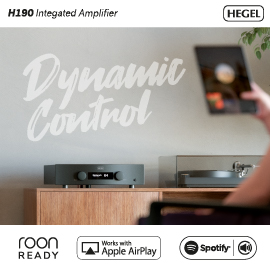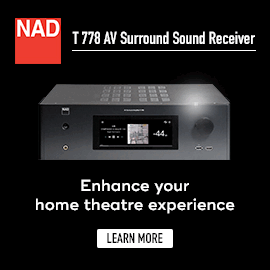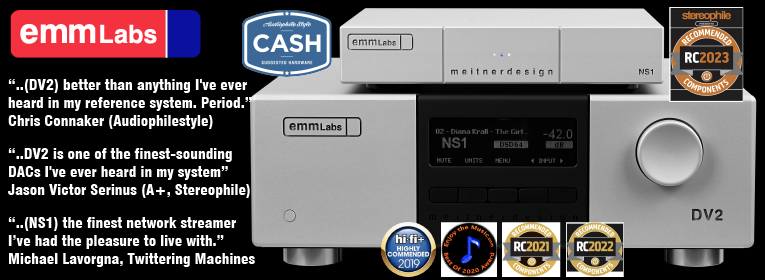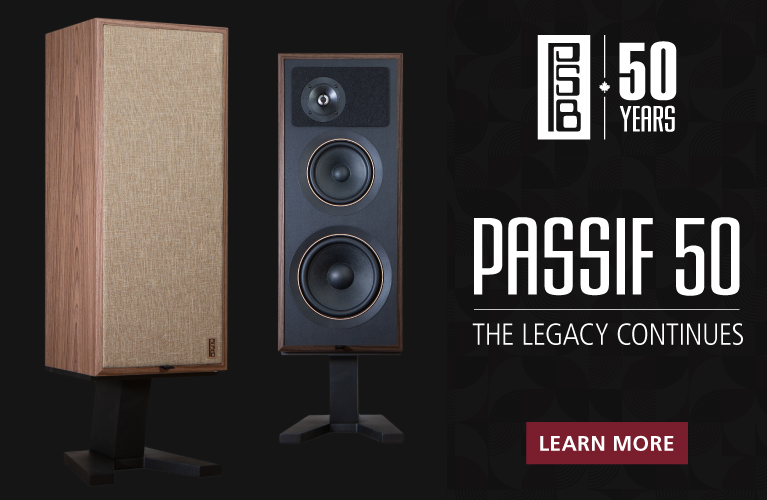Note: Measurements taken in the anechoic chamber at Canada's National Research Council can be found through this link.
Vince Bruzzese founded Totem Acoustic in 1987, in Montreal, Quebec. Last year, to celebrate the company’s 30th anniversary, Totem released the Signature One, successor to Totem’s very first speaker, the Model One. Jason Thorpe reviewed the Signature One on this site in April 2018.
Jason still has fond memories of the Model Ones, a pair of which he owned in the mid-1990s and credits with starting his journey in the audio hobby. Unlike his radar, mine didn’t detect the brand until 2003. This audio enthusiast with champagne tastes and sparkling-water budget discovered Totem Acoustic while reading a flyer from Bay Bloor Radio, a renowned audio institution in Toronto. I remember admiring the cabinetry of Totem’s speakers, in particular their rich mahogany finish. When I finally visited Bay Bloor to see and hear them in person, the Totems were even more impressive.

Unfortunately, aside from a couple of dealer showrooms and Montreal’s annual springtime audio event, I’d never spent time with a pair of Totems. That changed a few months ago, when SoundStage! Network publisher Doug Schneider dropped off the Sky Towers. I was especially delighted to see that the Skys I received were clad in the mahogany veneer, and to learn that they’d already been broken in. I wasted no time in setting them up.
Description
Like the Signature One, the Sky Tower ($2250 USD per pair) was introduced on Totem’s 30th anniversary. It’s the second Sky model, the first being a minimonitor launched in 2016 and named, simply, Sky. Both models are two-way designs, with a single tweeter and midrange-woofer. Totem’s current catalog includes no fewer than five floorstanding models with this driver arrangement.
The size of the Sky Tower’s drivers is somewhat unusual. The dome tweeter in almost every speaker I’ve reviewed that has one is 1” in diameter, while midrange-woofers are typically 5.25” or 6.5” across. Not so in the Sky, which has a 1.3”, laser-etched, fabric soft-dome tweeter crossed over to a 5.75” midrange-woofer at 2.5kHz with a first-order slope (i.e., 6dB/octave). It has a specified impedance of 8 ohms and a sensitivity of 88dB/W/m. Totem recommends amplification of 30-125Wpc; I had no problem powering them with my Bryston B135 SST2 integrated amplifier, which is specified to output 135Wpc.

One thing that impressed me on first seeing the Sky was its relatively petite size. It measures 33.5”H x 6.4”W x 9.1”D and weighs 22 pounds, making it even smaller than Monitor Audio’s Silver 200 ($1500/pair), which I wrote about in July and used for comparison. I live in a one-bedroom apartment whose main living space also serves as my listening area -- I appreciate a pair of speakers that doesn’t dominate the room, either visually or with overblown bass; they’re just easier to live with, particularly given my penchant for positioning speakers well out into the room.
The Sky Tower looks magnificent in mahogany, the wood’s deep red exuding a warm, rich glow that oozes class (Black Ash veneer and White Satin finishes are available). The cabinet is glued and lock-mitred, for a tighter, more secure fit. All edges are rounded, giving the speaker a softer, less boxy look. The cabinet is made of (MDF) -- that’s hardly novel, but unusually, the density of this MDF isn’t consistent: it’s denser on the exterior, for greater structural rigidity, and less dense inside, which Totem claims works better acoustically. The inner and outer surfaces of each cabinet wall are veneered, for greater strength and to prevent warping.
This speaker is a bass-reflex design: a port on the rear lets the midrange-woofer’s backwave exit the cabinet, to help increase that driver’s output. Below the port are dual sets of binding posts that accept bare wire, spades, or banana plugs, and permit biwiring or biamplifying.

Below the port is a second opening, for mass loading the speaker. Although the Sky Tower’s cabinet is damped using painted-on borosilicate, the user can add more weight by pouring through this hole his or her favorite dense material (Totem recommends kiln-dried sand, silica sand, or lead shot), then sealing it with an adhesive plastic cover (included).
The speakers are supplied with grilles that attach magnetically, but the manual firmly suggests that they sound better without them, and that the grilles slightly alter the sound by affecting microdetails and phase consistency. Hardly a problem -- I never use grilles unless a company says I should.
Each speaker is supplied with three Totem Claws: feet made of a highly dense, inert composite, to be screwed into the base of the cabinet to decouple it from the ground. Machined into each Claw is a 0.25”-diameter, 20-thread insert for accepting floor spikes, should you need them. Totem is adamant that no such spikes are required unless the speakers are set up on thick carpet, and so don’t even include them. While I can appreciate that Totem has done exhaustive listening and determined that spikes are superfluous, it bothers me that they aren’t included with speakers that sell for $2250/pair, for customers who might want to experiment with them.
System and setup
The Totem Sky Towers were hooked up to my Bryston B135 SST2 integrated amplifier with AudioQuest Comet speaker cables. Digital content was provided by an Apple MacBook computer running Audirvana software, feeding a Bryston BDA-2 DAC through an AudioQuest Forest USB link. The BDA-2 fed the B135 SST2 via Kimber Kable Tonik RCA interconnects. Vinyl was played on a Thorens TD 160HD turntable with a Rega Research RB250 tonearm and a Dynavector DV-10X5 high-output moving-coil cartridge, in conjunction with a Lehmann Audio Black Cube phono stage. All electronics were plugged into an ExactPower EP15A power conditioner-regenerator.

Totem’s manual suggests setting up the Sky Towers 6” to 36” from the wall behind them -- sure enough, the backs of their cabinets ended up 34” from my room’s front wall. Although Totem recommends pointing the Skys straight ahead -- no toe-in -- I angled them in slightly, until their tweeter axes crossed behind my head. This produced precise imaging while conceding little in terms of stage width.
Sound
Although the Totem Sky Towers had been broken in before being sent to me, I played them for a couple weeks before sitting down to listen and make notes. When I did start paying close attention, I cued up Tori Amos’s Boys for Pele (CD, Eastwest A2 82862). The percussion in “Caught a Lite Sneeze” makes this track sound big, and the Skys were up to the challenge, producing a grand stage with a convincing sense of depth. Amos’s voice is usually the focal point of her recordings, and through the Totems it seemed to “pop” even more, grabbing my attention in a way that was engaging but not distracting. The reverb added to the backing vocal helps extend the stage farther to the rear, and was easily audible through the Totems.
With “Muhammad My Friend,” also from Pele, the Skys did a fine job of conveying the weight of her Bösendorfer concert grand’s lowest register, giving the piano a pleasing fullness. I was impressed with the bass reproduction from what are really quite small floorstanding speakers. On first seeing them, I assumed they’d need to be set up closer to the wall behind them, to supplement their low end -- but, as described above, I began with them in the same positions my reference tower speakers usually occupy and never moved them again. I’m not suggesting that the Skys will satisfy if you enjoy bass-heavy music at high volumes. Yes, they had more power down low than I’d expected, but they couldn’t perform miracles. Depending on your listening habits and room size, adding a subwoofer or choosing a larger speaker (Totem makes a few of the latter) might be necessary. I needed neither.
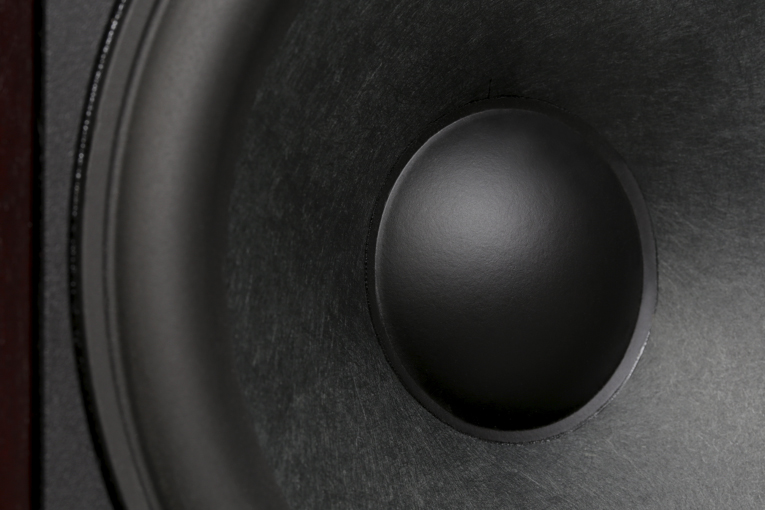
Listening to “Angel,” from Massive Attack’s Mezzanine (CD, Virgin 8 45599 2), I was struck by the Sky Tower’s ability to conjure up enough of the low end to give a sense of this track’s dark, cavernous atmosphere. The Totems sounded incredibly clear, conveying a lot of detail and letting me easily hear all that’s happening in this track. They retained their clean sound even as I took liberties with the volume knob, rewarding me with lucid sonics that remained composed even at levels that would be unsafe for anyone’s hearing over extended periods.
The pace of the drums in the more upbeat “Inertia Creeps” reproduced the infectious rhythm and got my toe tapping and my head bobbing -- the effect was addictive. Again, I was treated to a deep soundstage that extended well beyond the speakers’ outer boundaries. The Totems produced a solid, powerful sound that did a great job of filling my room.
“Society,” from the soundtrack album for Into the Wild (CD, J-Records 88697-15944-2), sounded wonderfully spacious: Eddie Vedder’s reverb-drenched voice seemed to have been recorded not in Seattle’s Studio X but in some great hall. It was this track that got me to move the Monitor Silver 200s closer to the front wall, to flesh out their bass. With the Totems, I felt no such desire. Not only did they dig deep enough where they were, but their distance from the wall had the added benefit of showcasing their imaging capabilities, which were very good. Vedder’s baritone vibrato definitely takes the spotlight here, but the harmony vocals of Corin Tucker and Jerry Hannan are well defined and serve to deepen the stage. The Skys are relatively small but sounded much bigger -- great news for those who want the big sound of big speakers, but don’t want them taking up all the space in the room.

I moved on to more complex music -- War Dance, from Respighi’s Belkis, Queen of Sheba: Suite, performed by Eiji Oue and the Minnesota Orchestra (CD, Reference RR-95CD). The layered stage and intricate orchestration were clearly reproduced before me, each section of the orchestra and individual instruments therein precisely presented. War Dance is a punishing piece of music, and it’s most invigorating with the volume turned up. The Totems proved more than up to the task, meeting the powerful dynamic shifts with ease. Obviously, if you want to hear this track reproduced with even more authority, you could opt for bigger speakers. But unless your room is large and/or you tend to listen at high volumes, I think you’ll find that the Sky Towers do a great job of conveying the explosive energy of the Minnesota Orchestra while occupying a small footprint.
As mentioned, the Totem Skys are the first speakers I’ve ever heard that use a 1.3” soft-dome tweeter, and this one was of excellent quality. At high playback levels it produced a crystalline sound that was never hard or etched. An example of this was in The Pines of the Appian Way, from Respighi’s The Pines of Rome, on the same disc. Like War Dance, this music sounds as if composed to mobilize an army. However, unlike War Dance, the piece opens amid a sense of calm, with a stillness that mirrors the dawn and the feeling of quiet that accompanies the early hours. Soon, life begins to stir, and the arrival of the day is heralded by the blaze of trumpets and an assortment of brass. The shiny tones of these instruments was lively and extended but in no way fatiguing. Combined with the pounding of the drum that underscores this track, the music is absolutely invigorating, and the Totems were the ideal instruments for its expression.

Switching genres and media, I grabbed my LP of Radiohead’s In Rainbows (LP, TBD TBD0001) and set it on the turntable. The warm, full sound of “Jigsaw Falling into Place” spread out to fill the front of the room. There was a good amount of detail and a pleasing rhythm to the guitars and drums. In “Videotape,” Thom Yorke’s voice came across bigger than life, while the piano had a nice sense of weight, possessing a dominant presence at the center of the stage. When I played “Videotape” on CD (TBD TBD0001), Yorke’s voice was smaller and better focused, sounding tighter and more authentic. From the various percussive sounds that dictate this song’s rhythm to the piano itself, which was noticeably tidier if less full, the CD version of this tune was simply clearer and more detailed. Listening to “Jigsaw Falling into Place” on CD confirmed these observations: from the first moment a cymbal is heard splashing in the right channel as a tambourine shimmers in the left, the CD was more resolving, with a treble response that was more vivid than on vinyl. The Totems proved themselves good tools for appreciating the strengths of the digital and analog editions of In Rainbows, though I ultimately preferred the CD for its more lucid sound.
Comparison
When the Totems arrived, I still had on hand the Monitor Audio Silver 200s. At $1500/pair and with similar overall dimensions, the Monitors could be considered direct competitors with the Totems. The two-and-a-half-way Silver 200 has a 1” (25mm) gold-dome tweeter of ceramic-coated aluminum magnesium (C-CAM) and two 5.25” C-CAM midrange-woofers. Designed in the UK and made in China, the Silver 200 comes in real-wood veneers, and has the same high quality of fit and finish as the Sky Tower. In terms of appearance, I could live with either -- each nicely fits into my room.
But they didn’t sound the same. Through the Monitors, the second, final, “hidden” version of “Possession” on Sarah McLachlan’s Fumbling Towards Ecstasy (16-bit/44.1kHz AIFF, Nettwerk), sounded cooler than through the Totems. As the piano’s hammers struck the strings, they conveyed more detail than the Skys, which sounded fuller. Through the 200s, McLachlan’s voice sounded superb -- I could more easily hear such nuances as the rhythm of her breathing and movements of her mouth. Through the Totems, McLachlan’s voice seemed to pop into the room, more upfront in the mix, surrounded by more space. As her voice rose into her upper register, it was as if the ceiling in my room disappeared -- her voice seemed to soar above it. Its incredible presence through the Totem Skys helped convey a haunting character that lent itself well to this song’s dark subject matter.
With “Me and a Gun,” from Tori Amos’s Little Earthquakes (CD, Eastwest 82358), the Sky’s midrange warmth was once again on display as Amos’s voice sounded more full-bodied than through the Silver 200s. The Monitors’ tighter sound brought her voice into sharper focus in this a cappella track -- in contrast with McLachlan’s “Possession,” I preferred the Monitors to the Totems with this recording: they sounded more exactingly precise in their reproduction of this track.
With “m.A.A.d. city,” from Kendrick Lamar’s good kid, m.A.A.d. city (CD, Aftermath/Interscope B001753602), the Monitor Audios were again the tidier of the two towers, though the difference wasn’t enormous. The Silver 200s’ bass was a touch drier than the Sky Towers’ slightly fatter, more rounded low end. Neither speaker could play deeply enough to do justice to this track, but at least in the lows I give the edge to the Totem, whose slightly looser bottom better suited this song’s vibe. Within their limits, both speakers sounded very good, and seemed far bigger than their diminutive sizes gave them any right to.
Conclusion
My first experience of hearing a pair of Totem Acoustic speakers in my room with my system was more fun than I’d anticipated. I thoroughly enjoyed my time with the Sky Tower -- it’s well built, looks good, and the construction of its cabinet reveals an almost obsessive attention to detail. The Sky Towers radiated degrees of visual class and sophistication that made me proud to display them.

Most important, I found the Sky Tower eminently musical -- it’s a speaker likely to keep you up far too late playing your most cherished albums. In addition to the warmer tone and the captivating way the Totems reproduced voices, I was equally impressed with their big sound -- a pleasant surprise that belied their small size.
It’s taken me 15 years to properly experience a pair of Totem Acoustic speakers. Having spent the last few weeks with the Sky Towers, I hope I won’t have to wait nearly that long to hear the next pair.
. . . Philip Beaudette
philipb@soundstagenetwork.com
Associated Equipment
- Speakers -- Monitor Audio Silver 200
- Integrated amplifier -- Bryston B135 SST2
- Digital sources -- Panasonic DMP-BDT210 DVD player (as transport), Bryston BDA-2 DAC, Apple MacBook computer running Audirvana
- Analog sources -- Thorens TD 160HD turntable, Rega Research RB250 tonearm, Dynavector DV-10X5 high-output MC cartridge, Lehmann Audio Black Cube phono stage
- Speaker cables -- AudioQuest Comet
- Interconnects -- Kimber Kable Tonik
- Digital links -- AudioQuest Forest USB, NexxTech TosLink
- Power conditioner -- ExactPower EP15A
Totem Acoustic Sky Tower Loudspeaker
Price: $2250 USD per pair.
Warranty: Five years parts and labor.
Totem Acoustic
9165 rue Champ D’Eau
Montreal, Quebec H1P 3M3
Canada
Phone: (514) 259-1062
Fax: (514) 259-4968
E-mail: info@totemacoustic.com
Website: www.totemacoustic.com





